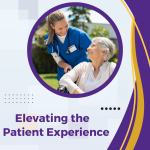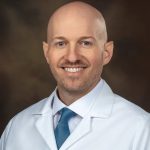
Fibromyalgia has been a misunderstood disease, sometimes described as a “myth.” Three decades ago, scarce science existed to support fibromyalgia as an authentic disease, but the medical profession now understands more about it and how patients can be successfully treated.
Fibromyalgia is a common syndrome in which people experience long-term, body-wide pain in the form of “tender points” in muscles, tendons and other soft tissues. Besides an amplified sensation of pain, patients can have a heightened sense of hearing, touch, taste and visual perception.
The condition can have multiple causes, including mononucleosis, Lyme disease, connective tissue disease (arthritis or lupus), hormonal imbalance (hypothyroidism), excessive stress, depression, anxiety and post traumatic stress disorder (PTSD).
Traditionally considered to be a form of soft tissue rheumatism, it has become increasingly clear that fibromyalgia is more complex. It is now identified as a musculoskeletal condition related to the body’s central nervous system.
No lab test or X-ray can indicate a person has fibromyalgia, and many physicians are not trained in diagnosing the disease. However, a trained rheumatologist, or physician trained in diagnosing fibromyalgia, can do so.
In 1990, the American College of Rheumatology set the criteria for a diagnosis: a history of at least three months of widespread pain, and pain and tenderness in at least 11 of 18 tender points. These sites include fibrous tissue or muscles found in the soft tissue on the back of the neck, shoulders, sternum, lower back, hips, shins, elbows and knees. The pain, which can range from mild to severe, then spreads out from these areas and is described as deep-aching, radiating, gnawing, shooting or burning.
The actual manifestation of fibromyalgia is frequently characterized by the presence of these symmetrically located tender points throughout the body, overwhelming fatigue and a host of other symptoms, such as headache, irritable bowel or bladder, problematic memory and concentration, numbness and tingling in hands and legs, depression, anxiety and profound insomnia.
Fatigue and problems with sleep are seen in almost all patients with fibromyalgia. Many complain they can’t get to sleep or stay asleep, and they feel tired when they wake up, with body aches and stiffness. Clinically, the appearance of fibromyalgia strongly suggests the need for a more detailed sleep history. For some patients, pain improves during the day and increases again during the evening, though many patients have daylong, non-stop pain. Pain can increase with activity, cold or damp weather, anxiety and stress.
Fibromyalgia is most common among women aged 20 to 50, many with serious, complex, underlying medical conditions that must be diagnosed if the patient is to see any relief.
The latest trend in treating fibromyalgia is using multiple drug therapy to control or manage the disease. Like treating diabetics or people with high blood pressure, sometimes numerous medications are needed to fit the patient’s symptoms. What is best is to treat the underlying cause of the problem.
Improving restorative sleep can reduce the symptoms. In addition, the Food and Drug Administration has approved three medications to treat fibromyalgia. The end result is not a cure, but rather a means to contain the symptoms. Patients may require ongoing medications for the rest of their lives, but sometimes only intermittently.
Anyone experiencing the symptoms of fibromyalgia should seek professional help that includes a multi-faceted approach to the management and treatment of the disease. A visit to your primary care physician would be the first step, with a referral to a rheumatologist for further treatment.
Bond Clinic has a Board Certified Rheumatologist, Dr. Bruce Clement. The Bond Clinic Rheumatology Department provides all the latest therapies, including biotechnology, available in the field of Rheumatology in a compassionate environment.
 Treating you well since 1948
Treating you well since 1948 


